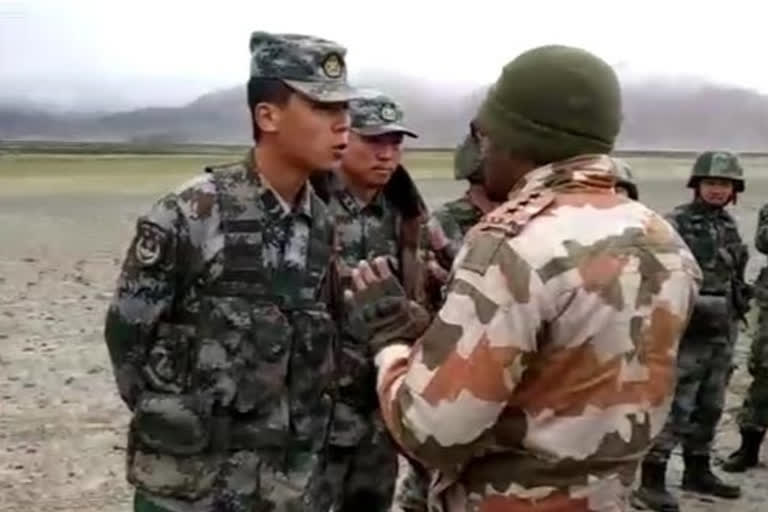New Delhi: The sudden nightly swoop down by Chinese military in the intervening night of August 29-30 (Saturday-Sunday) on Indian positions on the southern bank of the Pangong Tso is a gross violation of the rules of engagement agreed to between Indian and Chinese armies as part of an established mechanism to resolve border rows.
“It is for the first time that the Chinese military has attempted to force its way through Indian positions in the dead of the night. We have had face-offs in the past but it was always during the day. Our mutually agreed terms of engagement make it clear that military movement in areas of dispute along the Line of Actual Control (LAC) is to take place only during day time,” Lt Gen Rakesh Sharma (retd) told ETV Bharat.
“There are other firsts too in this India-China faceoff. It is also for the first time that China has attempted to open multiple positions along the LAC. Also, the fact that while earlier scuffles would take place between Indian forces and the Chinese border guards, at the June 15 Galwan Valley clash it was the PLA.”
“Indian forces have been very vigilant on the southern bank as this area was believed to be a contentious area with escalatory potential. In the past, the Chinese would patrol to a certain point in the southern bank, take a u-turn and move to their side,” adds Gen Sharma, who had commanded the Leh-based 14 Corps.
The LAC runs across the Pangong lake, one-third of which lies inside India while two-thirds lie in China.
Unlike the northern bank of the Pangong Tso where there is considerable space along the bank, the southern bank is a very small area.
Also Read: Post-Galwan clash, Indian Navy quietly deployed warship in South China Sea
Further details about the Saturday night clash are still awaited after Army spokesperson Colonel Aman Anand issued a press release confirming the incident on Monday.
On May 5, a fistfight had taken place between Indian and Chinese soldiers in the northern bank of the Pangong lake leading to PLA setting up new fortified positions on the Finger 4 area.
While in the first phase of ‘disengagement’, the PLA had moved back to Finger 5 from Finger 4, it is from the dominating Finger 4 ridgeline that the PLA has refused to budge from.
It was the southern bank of the Pangong Tso besides Galwan Valley that was in the thick of the action in the 1962 war with China while the northern bank was free of incidents.
Saturday night’s development is another indication of China’s new attitude of belligerence and to ‘show muscle’.
The development also means that a resolution of the issue is far off and may well be prolonged in the backdrop of the seeming failure of all established mechanisms even as heavy mobilization of soldiers and war-like equipment continues from both sides.
Also Read: Chinese PLA violates status quo near Pangong lake, says Indian Army



